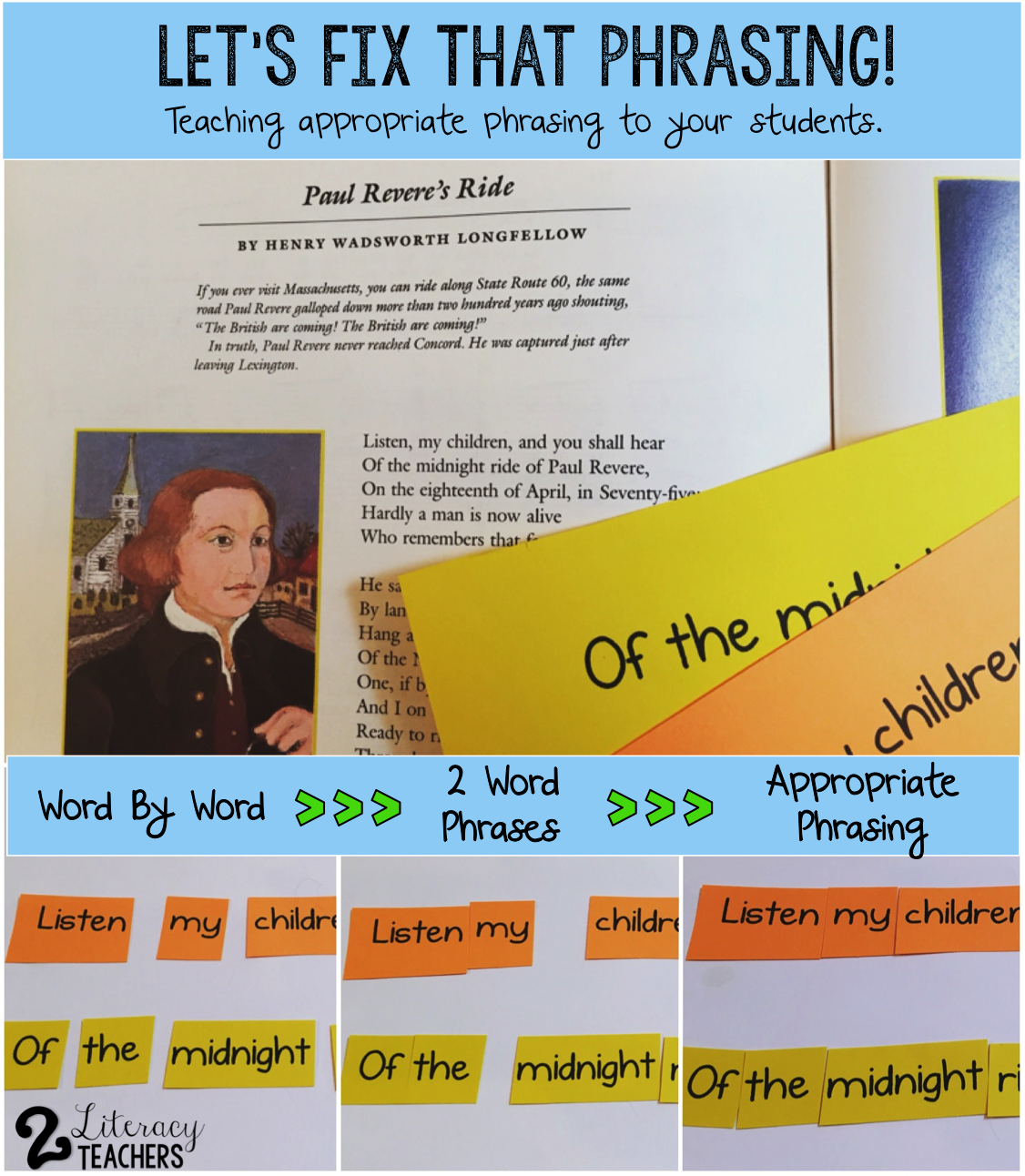
When we have students who struggle in reading overall or who are struggling with just one thing, we reach into our bag of tricks and pull out another teaching goody to help them. But sometimes around the middle of the year, we find our bag of tricks is empty! We’ve used them all up! That’s what is so great about blogs, Pinterest and Instagram! We can just hop on and look for more tricks for our bag. So, do you need another trick for helping students learn to read with appropriate phrasing? Preferably one that is hands-on and keeps fidgety kiddles engaged? Here’s one to try that works with all grades.
The 5th graders in my groups are studying the American Revolution in their classes, so we are getting ready to read “The Midnight Ride of Paul Revere.” The only problem is that they don’t read with appropriate phrases, and this is a tricky poem! In addition to that, they will be doing Reader’s Theater in class later and will NEED to be able to read in phrases that sound right.
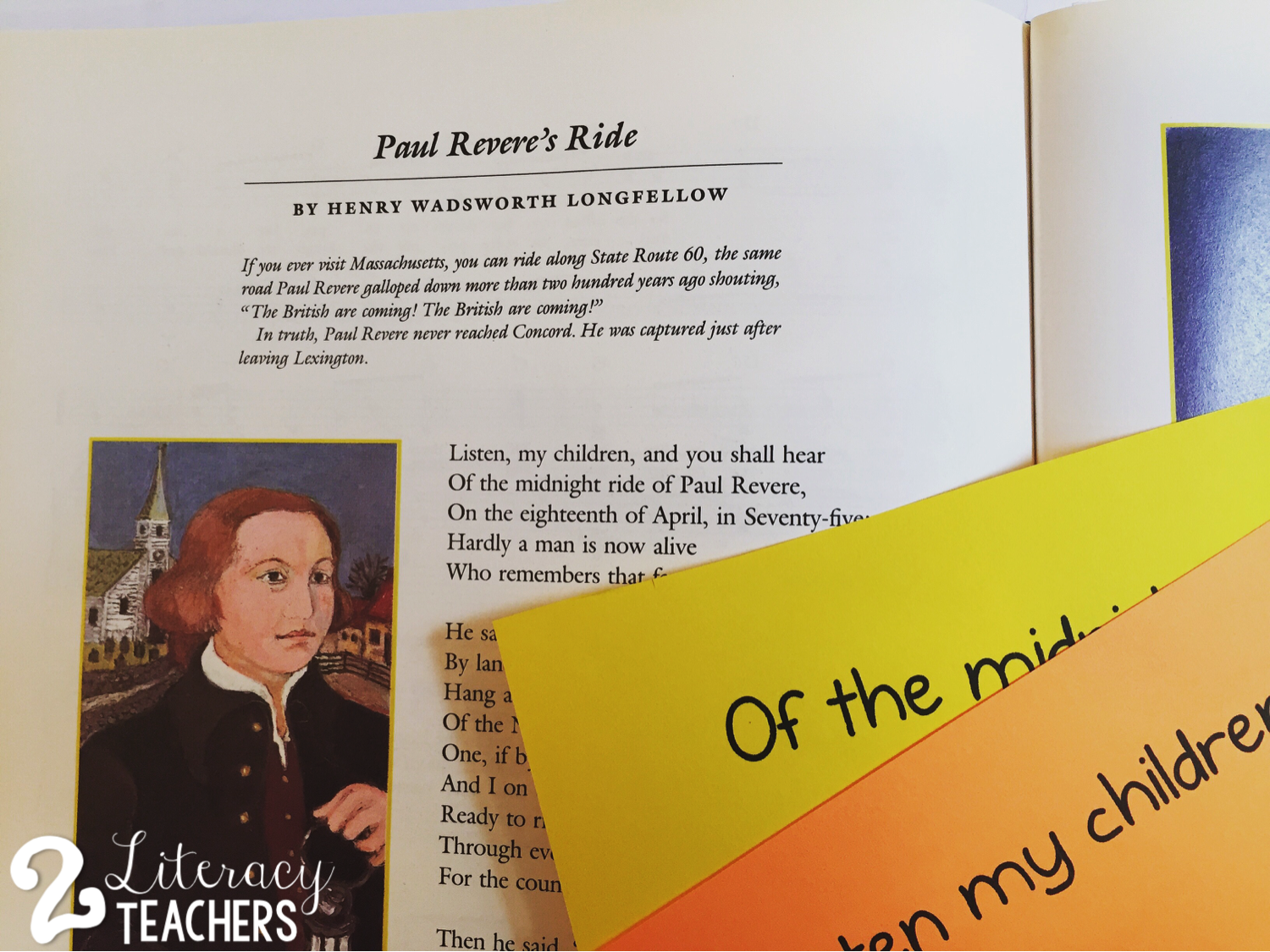
So this coming week we will be starting out with this activity. Each sentence of the poem’s first paragraph has been typed onto colored card stock, then cut apart into words. First, we will talk about the importance of reading in phrases and I will read some non-examples and examples to help them hear what sounds best and makes sense. Then, we will work together to figure out how the first sentence should go. I will ask them to spread out the words and read them word by word. “Does that work? Does that sound right?”
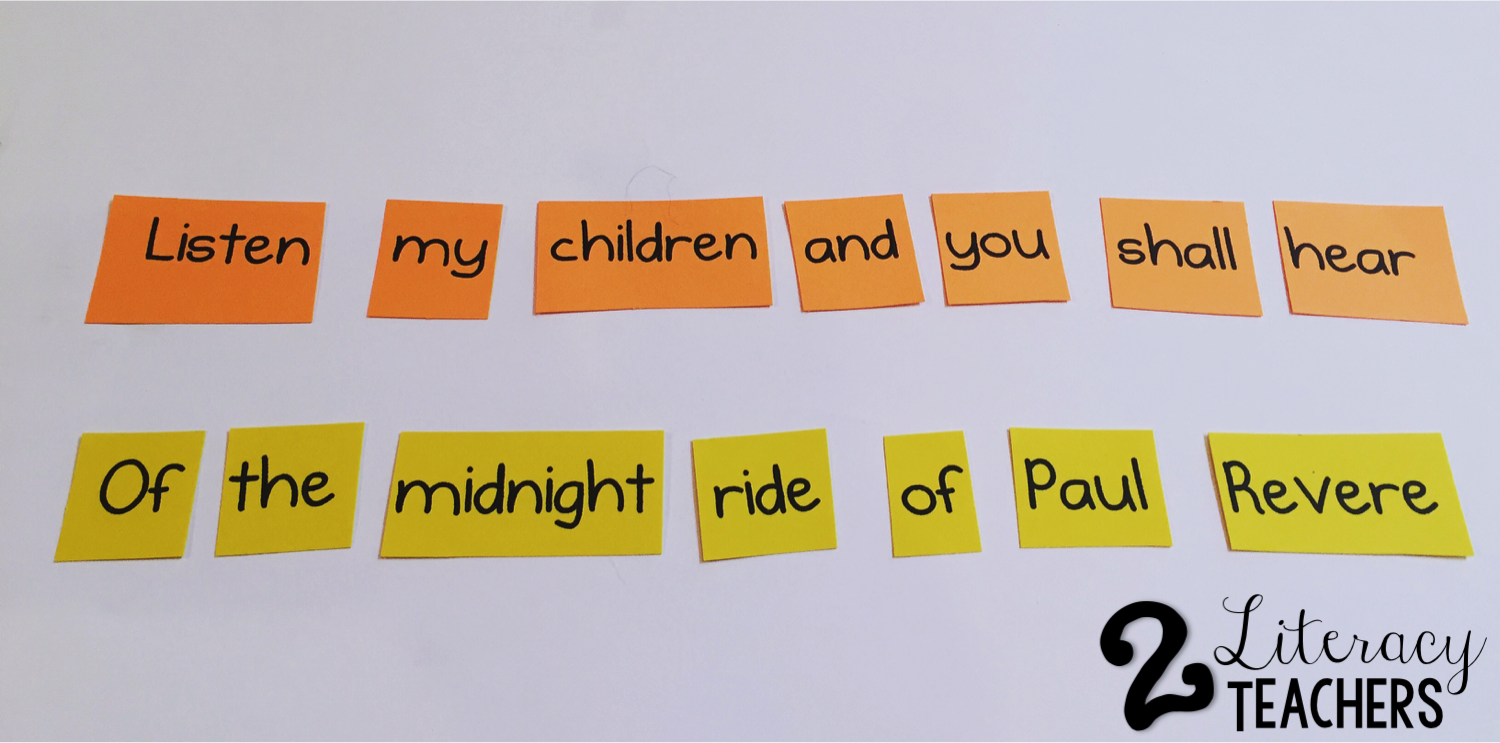
“What about two words at a time? No?”
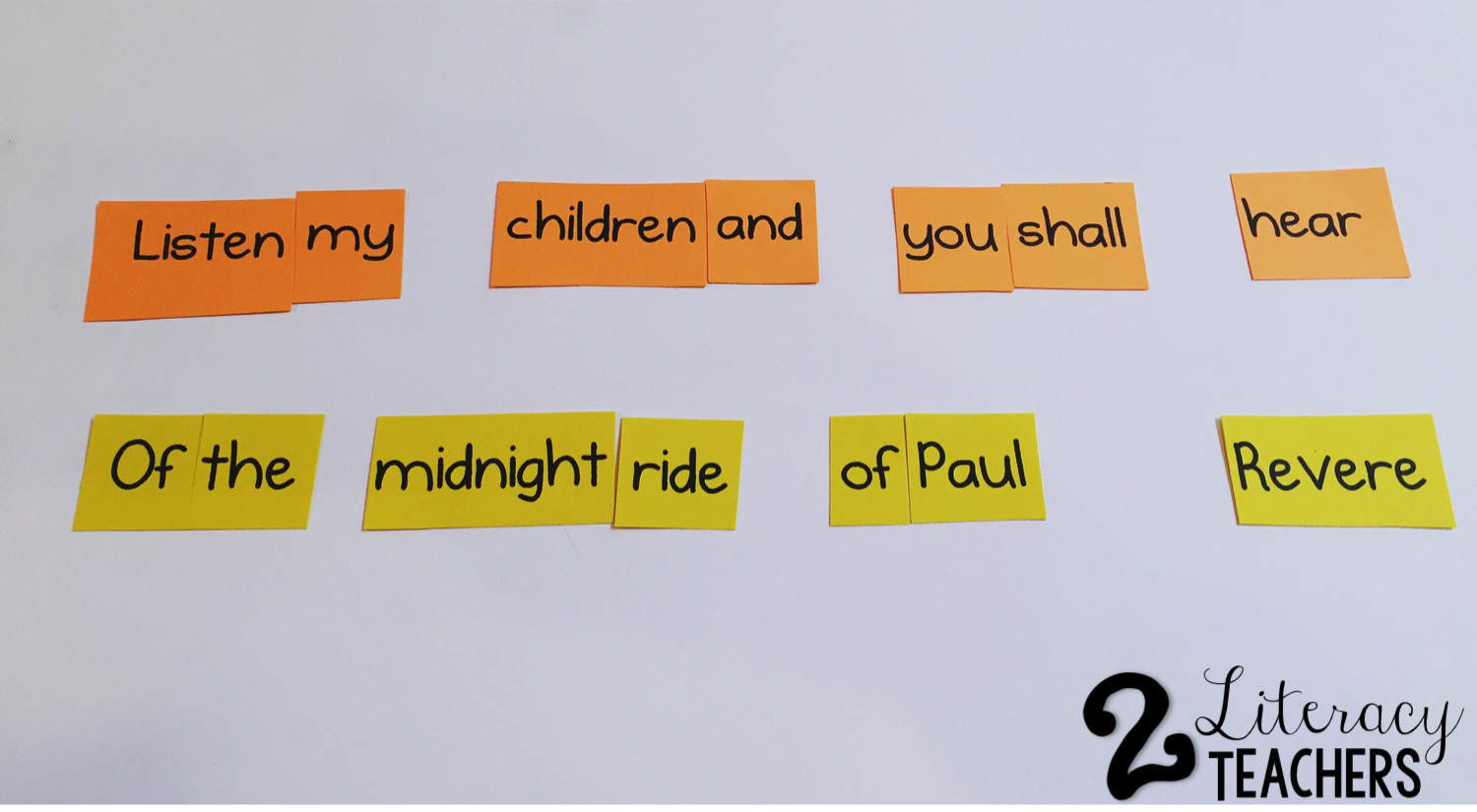
“Okay then. Let’s try this! Read it and see how it sounds. Much better, right? How did we group the words to make it sound right? So how did it affect the poem when you read it with incorrect phrasing? Ahhhh…..so it’s important to use appropriate phrasing then!”
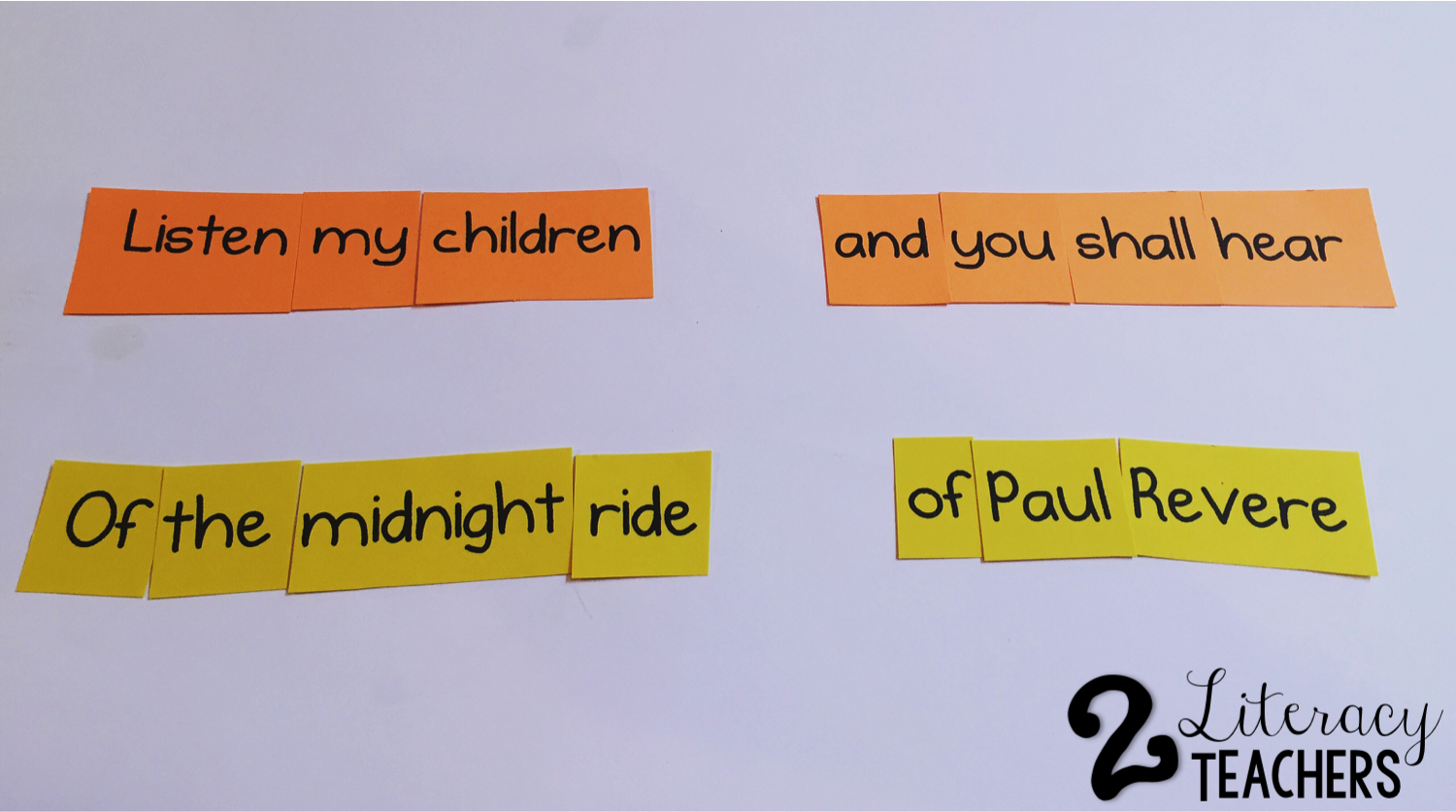
After we work through the first sentence together, they will work through the other three sentences with a partner or on their own (their choice.) When they think they have it so that it sounds right, they will read it to the group. If we have time, we will practice the first two paragraphs of the poem together. If time is short, we will begin the poem the next day.
So there you go…..a hands-on way to use guided release teaching for appropriate phrasing. It has worked successfully with my intervention groups for many years. If you are out of tricks, give this one a try. HaPpY TeAchInG!
Smiles,
Kristin


Author
This is a wonderful tip! Thank you for sharing. I have children who also struggle with phrasing and I can see the benefit of cutting up the words and demonstrating different ways to read something.